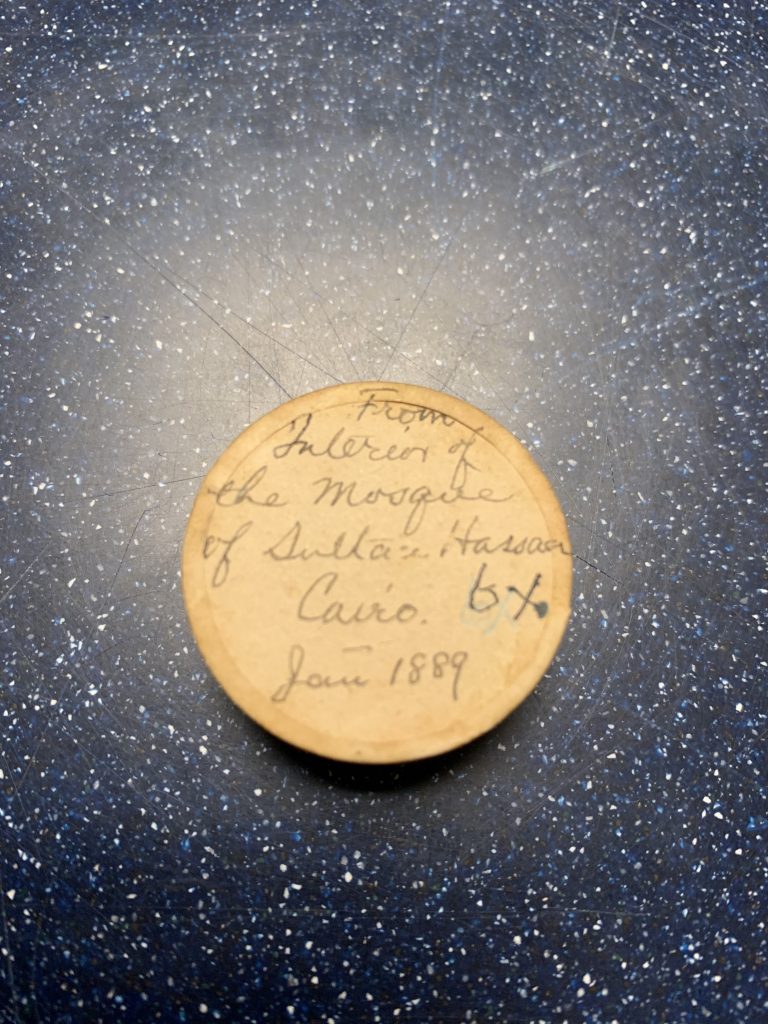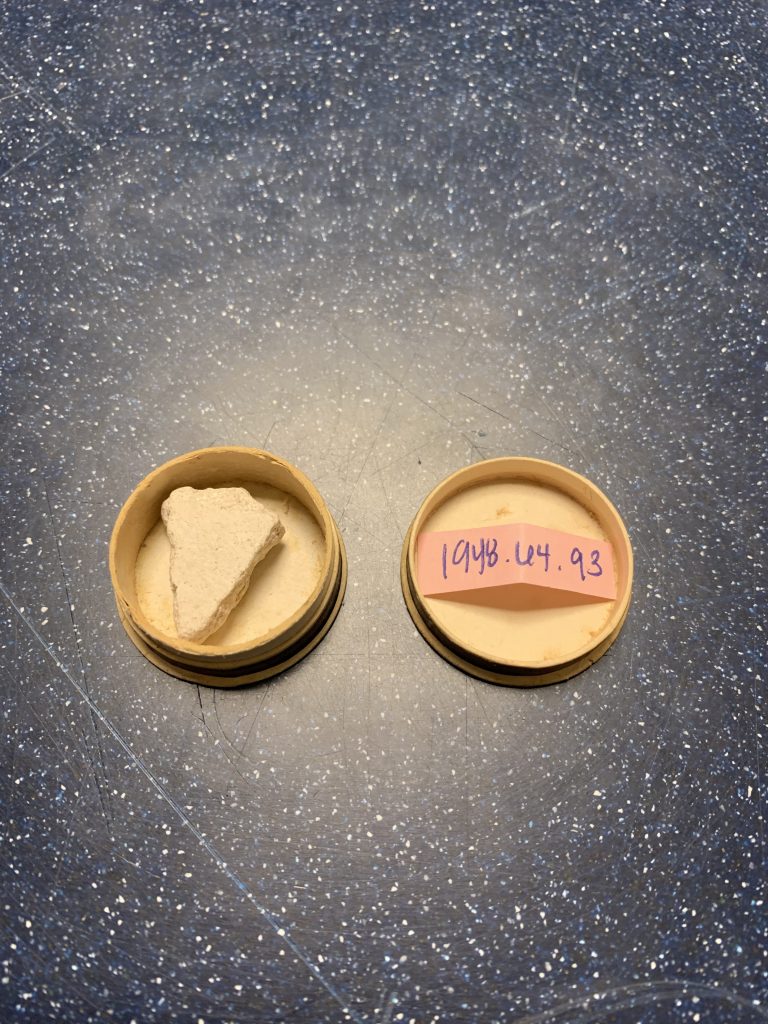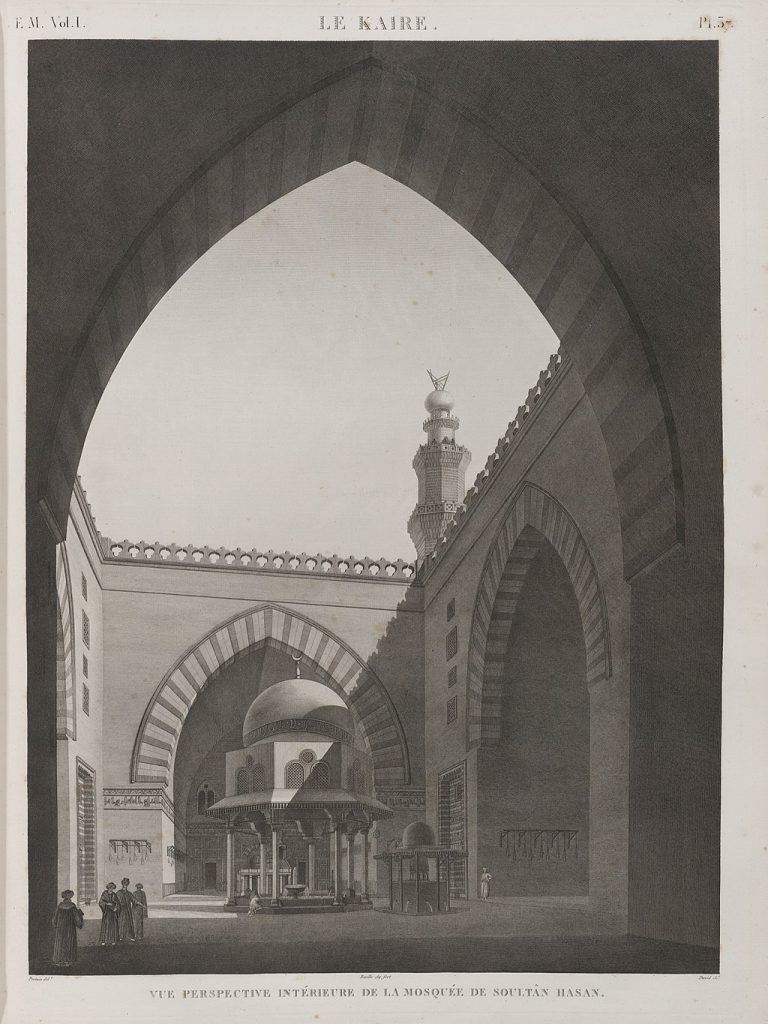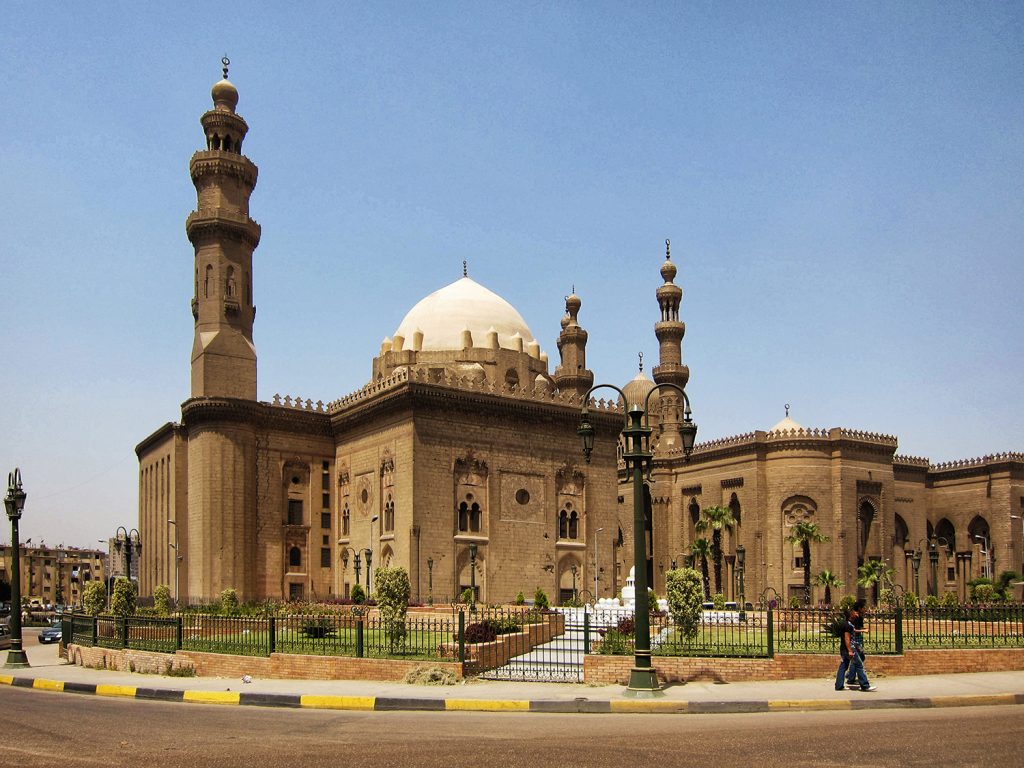
Canister with Reeve’s Handwritten Label 
Fragment of Stone from the Mosque of Sultan Hassan 
Interior of the Mosque of Sultan Hassan 
Exterior of the Mosque of Sultan Hassan
By Ahmedalbadawy https://commons.wikimedia.org/wiki/File:Mosque-Madrassa_of_Sultan_Hassan_-_Exterior.jpg
- Cairo, Egypt | 30.0323° N, 31.2562° E
- Acquired by General Reeve in January of 1889
- BM# 1948.64.093
This stone, sand-white in color, was taken from the Mosque of Sultan Hassan in Cairo, Egypt during General Reeve’s expedition to Cairo in 1889. The Mosque was built in the medieval period, meant to be a mausoleum for the Sultan Hassan(AD 1356-1363) (Behrens-Abouseif, D. 2007). The exact location in the mosque from which the stone was taken is unclear.
In his book, How We Went and What We Saw: A Flying Trip Through Egypt, Syria, and the Ægean Islands, Reeve, as his title suggests, recounts the sights he encountered during his trip. Reeve travelled from Alexandria to Cairo by train and he is impressed by the fertility of the Nile soil. In describing the mosque of Sultan Hassan, he is mostly left with the impression of a building “crumbling to decay” from close but as “mysteries as well as marvels in stone” from afar. Reeve does not mention the piece of stone he collected as a souvenir from the monument. (Reeve 1891, 46-47)
This stone marks Reeve’s travel to the monument in 1887. Reeve mentions that the stone came from the interior of the Mosque.
The Mosque of Sultan Hassan was inaugurated in AD 1356, during the rule of the Mamluk Dynasty. The Sultan wished to have it as his mausoleum, yet he was assassinated in AD 1361 before it was finished. His body was never found, so it could never be buried in the building, even though its construction continued. The mosque was meant to be the tallest and greatest building in the world to act as a symbol for Sultan Hassan’s power and wealth, as customary for Mamluk architecture. The Mamluks were foreign rulers and were newly converted to Islam, creating a need to legitimize themselves to the Muslim population. Much of the architecture of this time period is focused on scale to reflect power, with special emphasis on religious architecture to prove devotion. This large-scale construction was made possible by Mamluk control of Egypt and Levant, two important and wealthy regions with a strategic position on the spice route. This, along with agriculture and manufacture goods, caused the economy to prosper and allowed for such ambitious architecture. (Mahmoud, F. 2016)
The façade of the mosque is made with stone and some marble detailing. The original dome was made of wood and was covered in lead, yet it collapsed in AD 1671 and was replaced with the one that Reeve would have seen, and that still exists today. (Mahmoud, F. 2016)
For Further Reading
- Al-Harithy, H. 2001. “The Concept of Space in Mamluk Architecture.” Muqarnas Online 18, no. 1: 73-93. https://doi.org/10.2307/1523302
- Atıl, E., and National Museum of Natural History. 1981. Renaissance of Islam: Art of the Mamluks. Washington, D.C.: Smithsonian Institution Press.
- Abdin, T. 2010. “A historic perspective of the architecture of the Islamic world with special reference to Cairo.” https://www.academia.edu/396379/A_historic_perspective_of_the_architecture_of_the_Islamic_world_with_special_reference_to_Cairo
- Behrens-Abouseif, D. 2007. “The madrasa and Friday mosque of Sultan Hasan (1356-63).” In Cairo of the Mamluks : A History of the Architecture and its Culture. 201–213. London: I.B. Tauris.
- Mahmoud, F. 2016. “The Aesthetical Aspects for Monumentality of Mamluk Architecture Reasons and Analysis. Study Case: Sultan Hassan Complex in Cairo.” Journal of Architecture, Art & Humanistic Science 1, no. 4 (autumn): 1-11. https://doi.org/10.12816/0036588
- O’Kane, B. 2016. The Mosques of Egypt. New York: American University in Cairo Press.
- Reeve, C.M. 1891. How We Went and What We Saw: A Flying Trip Through Egypt, Syria, and the Ægean Islands. 38-47. New York: The Knickerbocker Press. https://books.google.com/books?id=XAZBAAAAYAAJ&printsec=frontcover&source=gbs_ge_summary_r&cad=0#v=onepage&q=sultan%20hassan&f=false